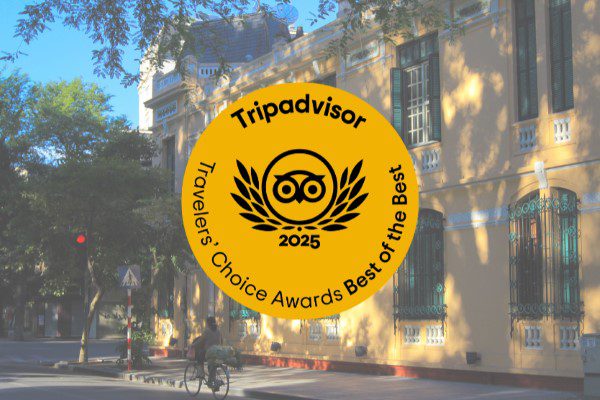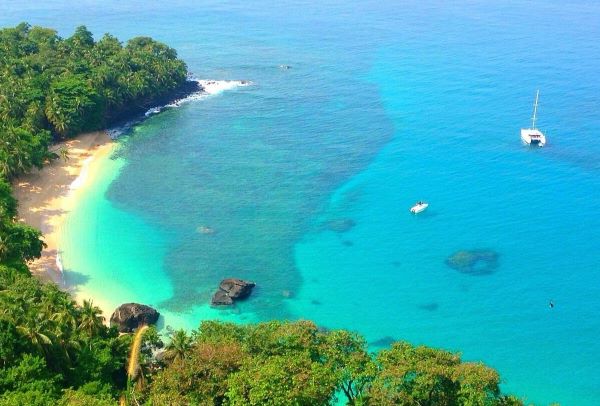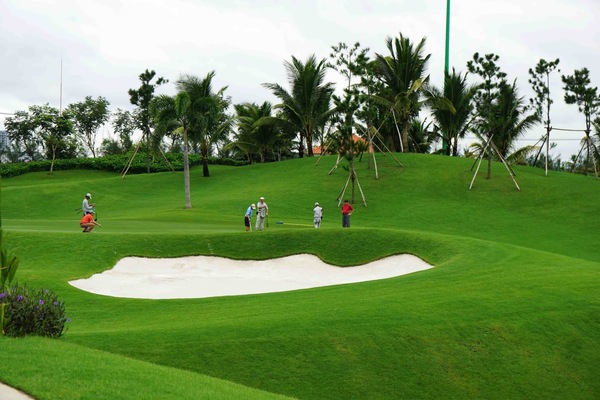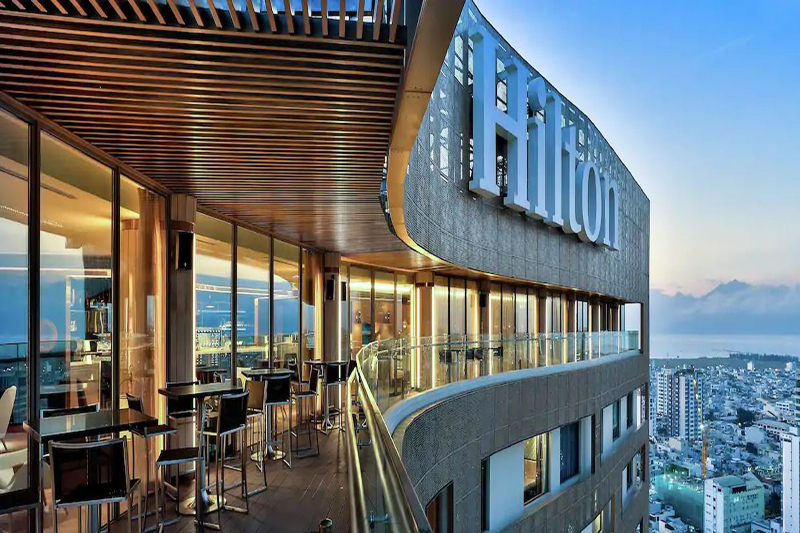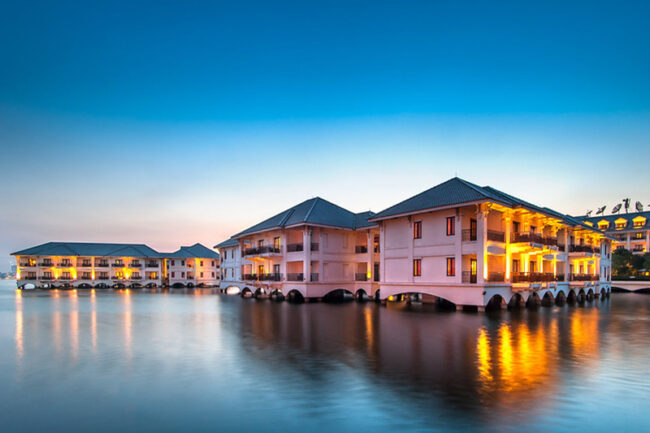I do not have much luck with the ancient Cham towers despite many visits to this cluster of towers. I come to these towers because it is in the visiting-list when I travel somewhere. With Khương Mỹ, it is fortunate that I can follow my friend, who researches history, from tower to tower from Quảng Nam to Bình Thuận.
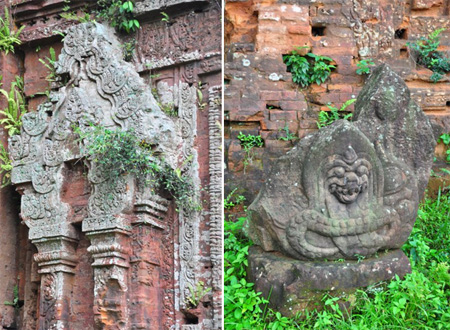
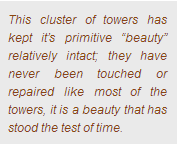
It’s raining lightly when we find a way to Khương Mỹ tower. In recent days, the weather in Quảng Nam has been unstable, one day it rains, one day it is sunny, creating some obstacles to our tower visits. It is lucky for us, when we reach the tower, the rain stops and there’s a little sun. It is past 12 p.m, the guard is on his lunch break, he has just left a message and phone number just in case. While waiting for the guard to open the door, I wander around to take photos of the tower from the outside.
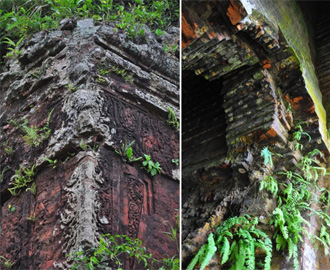
Khương Mỹ towers are located at hamlet 4, Tam Xuân I village, Núi Thành district, Quảng Nam province; they were built at the end of the IX century – the beginning of the X century and include three towers: the North, the Mid and the South tower. They were recognized as a national monument in 1989. There’s a fence built around the group of towers and they are located quite close to the road, therefore from the outside, I absolutely could not take photos of all three towers without tripping over the fence and some wires around. There are bricks and stone, mortar sand at the foot of the tower, it seems that there was a plan to repair the tower, however, it was canceled quite a long time ago.
The guard comes to open the door, realizing were are coming from the North; he is really happy as there haven’t been any visitors from the North for a long time. He is the only guard and there are not many vistors coming here. It seems that the World Heritage Mỹ Sơn Sanctuary attracts all the tourists, therefore, there are not many visitors coming to small towers such as Chiên Đàn, Khương Mỹ, Cánh Tiên, Thốc Lốc… except for the researchers.
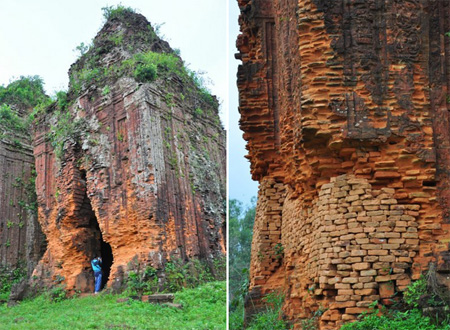
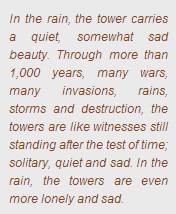
The three towers are arranged according to the North – South axis, in the traditional Cham tower style with a nearly square foundation. The door is in the east, the roof tower has three floors, the upper floor is the epitome of the below floor, the roof is made from sandstone. The towers are close together, therefore, due to the inconvenient position, it is hard to shoot the sides of the towers, the most beautiful remaining walls that I particularly noticed by the fairly intact remaining patterns.
While my friend is still engrossed in conversation with the guard on the towers’ architecture and preservation, I take a short walk around the three ancient towers.
After visiting numerous towers that were rebuilt with the mixed color of brick and mortar, sculpted to replace the original brick blocks that have often broken over time, I am fortunate to have a chance to see such an untouched tower. I do not know how many ways people have to used to restore the thousand year old towers, but looking at the towers that are being gradually modernized and corrupted makes me feel sad. It seems that our attempts to restore the towers, built in a technique lost to time, is almost worse than leaving them alone.
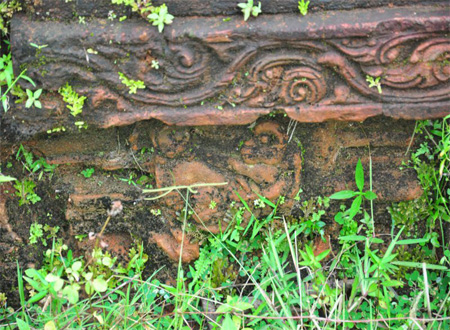
The false doors of the tower floors are decorated with Bodhi leaves stylized as flame. Some sculptures in terracotta material attached to the body of the tower have the shapes of the bird god Garuda, snake Naga, human riding elephant, human riding horse, flying soldiers… Some sculptures and decorative corners of sandstone were brought to Đà Nẵng, and displayed at the Museum of Cham Sculpture, leaving boxed recesses in the brick wall, interspersed with patches of flowers sculpture on tiles. Inside the empty tower, there is only moss covering places where the light can penetrate in. At Khương Mỹ, a number of motifs in Khmer art appeared for the first time in Cham architecture. They are delicately sculptured on the walls and gate towers like patterns of herbs, bent twigs, deeply grooved leaves; overlapping rhombus formed by the diagonals and the stylized flowers, a characteristic pattern of Khmer art at the end of the IX century, and beginning of the X century.
The 2nd wall of the tower is a huge work of art that still remains relatively intact. From the foot to the top of the tower is the pattern sculptured directly onto the brick with incredible flexible lines. After thousands of years, the patterns are still incredibly charming, the dark colors after the rain makes the beauty of the brick wall even sharper. The exposed parts help us to see the bricks with special joints. Scientists continue to wonder how the ancient Cham people built the towers. Did they stack the brick individually, and then, join them with a special adhesive cement, or did they bake the whole tower? There has been no definitive answer to the question so far.
I am extremely interested in the long-form sculptures of cute busy monkeys around the base of the tower. The monkey sculptures may relate to the long poem Ramayana, a famous epic poem from India bearing the imprint of Brahmanism, a cultural tradition that influences the Cham. Some monkeys are carrying objects on their heads, maybe they are wading though the water (according to the legend, in order to reach Sri Lanka, the monkeys had to cross the sea). A quite mischievous scene where a monkey is being bitten by a turtle or a chelonian on his lower body, another monkey standing next to it, scratching his head, looks funny with his right hand pointing to the turtle.
The next sculpture is also a monkey being bitten by a turtle, lower is a small monkey trying to unravel the turtle. Another sculpture shows the fatigue of the monkeys: one bends down, holding a bottle of water; one in between is lifting something; the one on the left is sitting on a rock, his hands against his chin. A sculpture displays three monkeys playing drums, dancing quite jubilantly, perhaps they are celebrating their victory… The monkeys presented on these sculpture are lively and funny, it is worth noting that all the monkeys’ sex parts are shown clearly. The monkey sculpture at the base of Khương Mỹ tower is a very unique feature in the art of Champa.
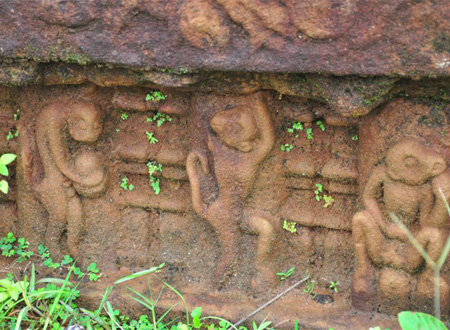
Khương Mỹ tower leaves a special impression on me through its remaining exquisite sculptural motifs. Being different from other towers located in Bình Định to the South, which are manlier, more energetic, the Cham towers of Quảng Nam are feminine with lots of flowers. Unfortunately, there are not many Cham towers that can retain their beauty like this, untouched, the Khương Mỹ towers are the only ones. Other Cham towers are restored in many different ways such as being built with new brick, cement stucco, cement base, polished old tiles, nano technology… however, there hasn’t been much success. It seems that the best preservation now is building supporting columns, cutting the grass regularly and cleaning the walls because though the flowers make the towers more beautiful, they are a factor leading to the brick erosion. However, that’s just my own personal judgment, the solution still depends on many factors and many scientists in the field of restoration and conservation.
Leaving Khương Mỹ towers when it turns dark, my friend and I could not help but regret not having enough time for the relatively intact towers. Khương Mỹ tower is being seriously degraded and faces the risk of collapsing at any time. The South tower has the most serious damage. Many walls on the tower body, with carved motifs carrying unique artistic value, are erroded leaving merely the red color of brick. Loose bricks are embed in the tower body and there are many cracks on the tower gates. Under the direct impact of the rain, sun and weeds, the tower roof is no longer adhesive and the tiles are starting to fall.
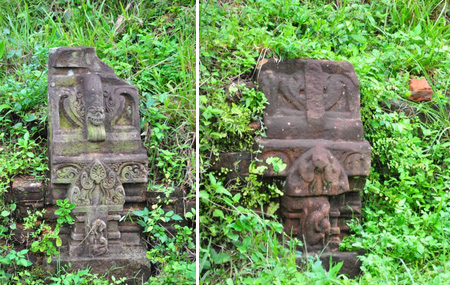
Facing such situation, recently, the relic management board has carried out a plan to clean the weeds clinging to the tower, but this is just a temporary solution, it cannot prevent the degradation of the tower. In the future, Khương Mỹ towers will be restored but the solution is still uncertain. Hopefully, what remains of a thousand-year heritage will be preserved in the best way.








